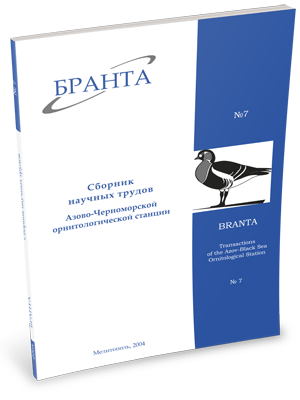
Transactions
of the Azov-Black Sea Ornithological Station



Review of epizootologic importance of Pelecaniformes and Ciconiiformes by the example of the Azov-Black Sea region.
Grekov V.S., Rusev I.T., Nekhoroshih Z.N., Shevchuk L.I., Malikova M.V., Varisheva T.N., Dzhurtubayeva G.N., Stepankovskaya L.D., Mogilevskaya Z.I.
The article reviews epizootologic and epidemiologic roles of Pelecaniformes and Ciconiifomres in deceases known at present and shared by birds and humans. High mobility of birds assists wide diffusion of infections. Birds often turn into lifelong carriers and circulators of infectious agents. However, not only birds but also people themselves contribute to introduction of the strains which are new for some region and therefore the most aggressive. For instance psittacosis (ornithosis), taken with parrots into Europe, caused lingering epidemics that covered several countries in late ‘20s of the last century and were characterized by high mortality up to 45% of all the people diseased.
Introduction of a virus of the Western Nile fever into the USA and its diffusion over all states for the last decade, with more 200 bird species engaged in epizooty, resulted in revision of the combating strategy against those infections where birds are principal carriers of infectious agents.
The data given in this paper do not exhaust medical importance of birds, in particular Pelecaniformes and Ciconiiformes, because at least 46 virus agents, isolated from birds in the Azov-Black Sea region, were not identified. So it necessary to carry out a permanent monitoring of bird populations in the Azov-Black Sea region and develop relevant measures against epizooty and epidemics.
Read the paper in a PDF file